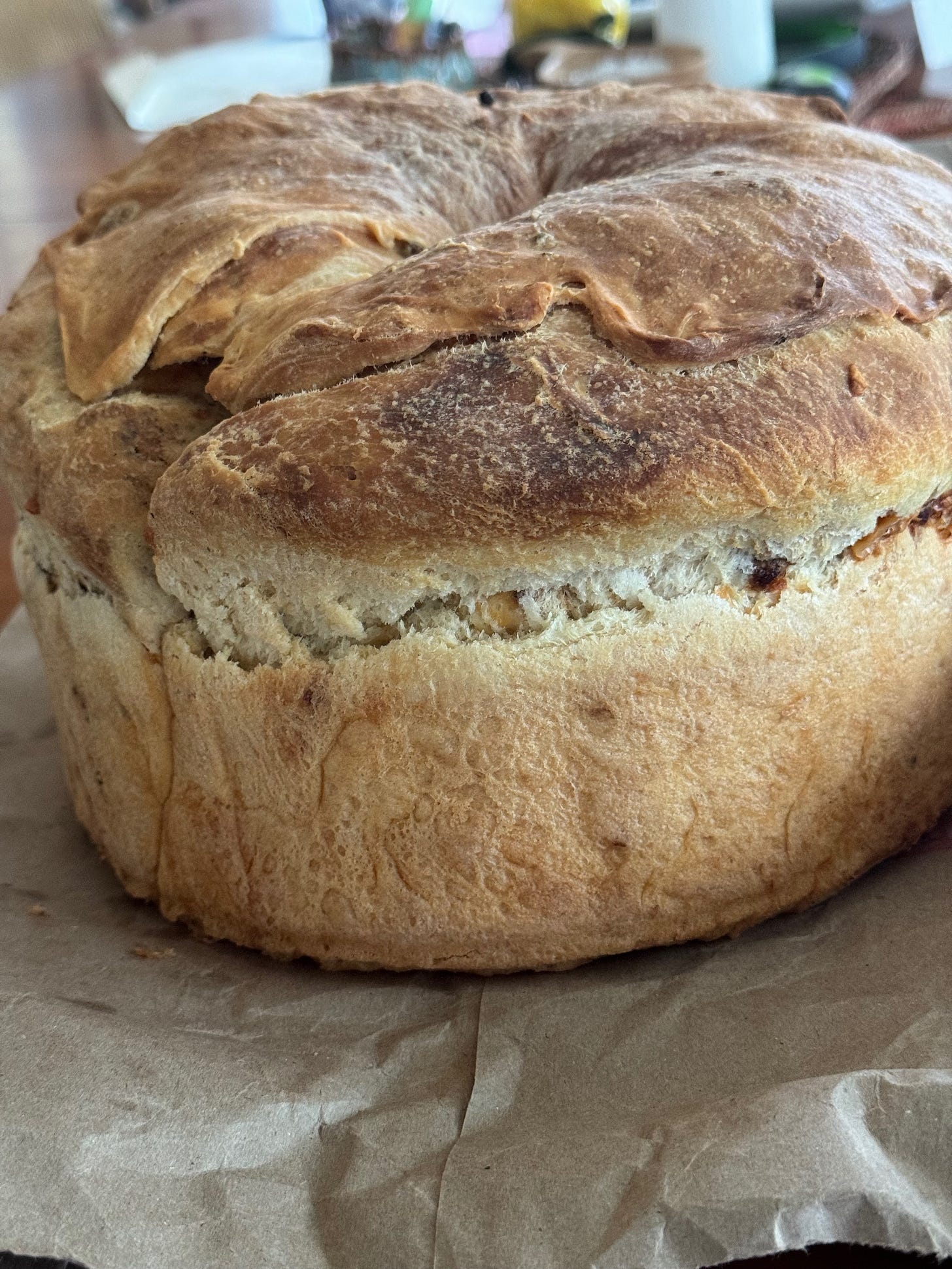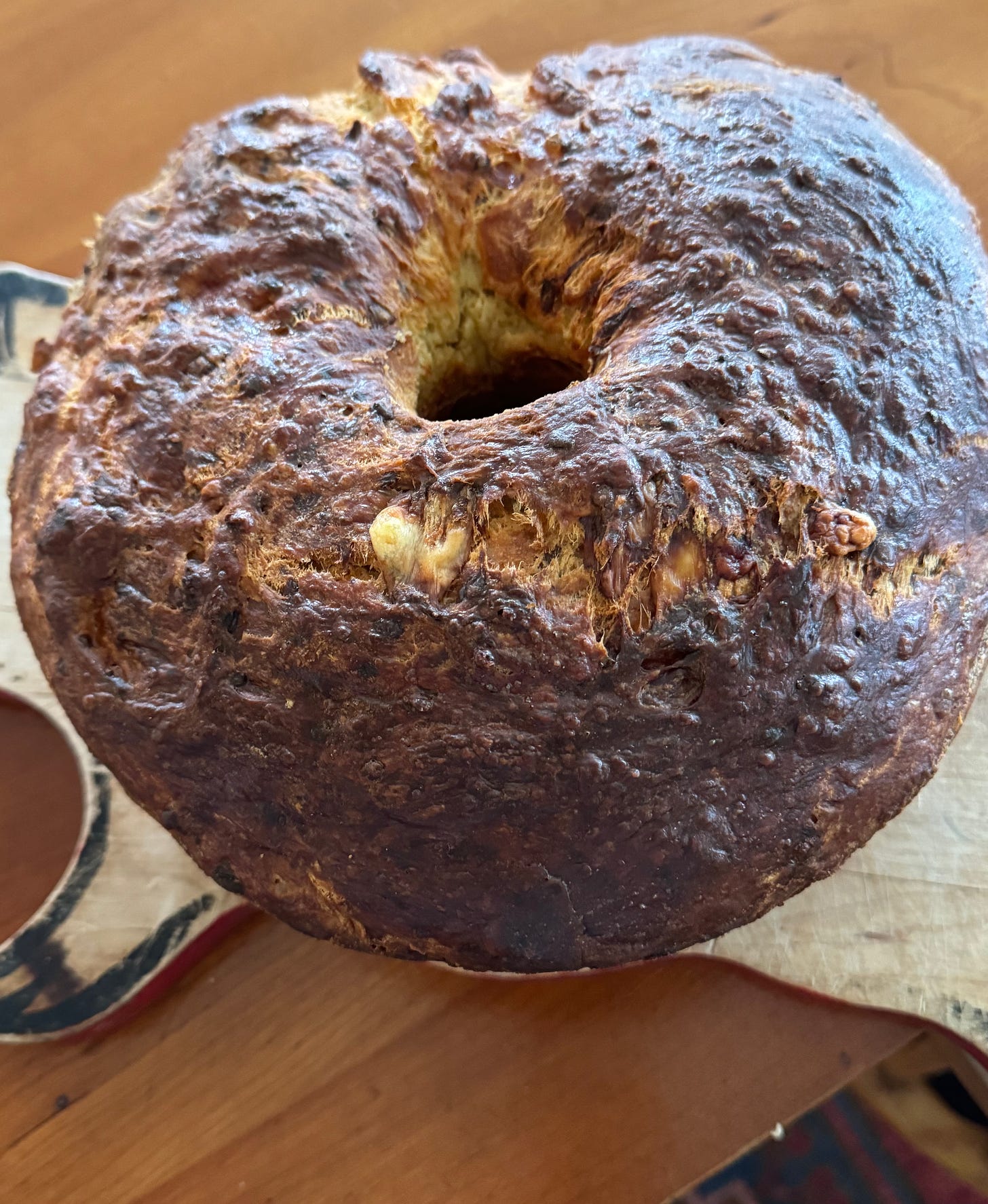Lagniappe for Easter Monday (Pasquetta)
with not one but TWO recipes for casatiello napoletano
Pasquetta, Little Pasqua, Easter Monday, is celebrated as a holiday all across the Christian world except in the workaholic United States where any celebratory occasion is seen as just an excuse for department store sales, the most festive thing we can dream up for our consumerist calendar of holidays. But in Italy, France, and other places around the Mediterranean, and in most of Europe, including the British Isles, folks take that extra day, perhaps to eat up the Easter leftovers, often, weather permitting, as a picnic. Gather up all the remains of the day, recompose them into a salad or a baked pasta or a tart, quiche, or omelet, and don’t forget the chocolate eggs, the cakes, the almond-scented sweets of the holiday, pile it all into the family wagon, whether horse-drawn cart or e-powered Ape, and head for a nearby beach, park, or mountain meadow to continue the celebration of spring—that’s my idea of a perfect holiday!
In Napoli, an invariable feature of Pasquetta is a beloved bread (or is it a cake?) called casatiello. Nowadays this cheesy, sausagey, porky treat is available right the year round but in the not-too-distant past (meaning, when I first went to Naples back in the 1970s), casatiello was made only at Easter, and quite specifically for Pasquetta, Easter Monday. In texture casatiello is a bit like a brioche because of the eggs and fat that enrich the dough. In Naples that fat would be smooth, creamy lard, a pure fat unencumbered by preservatives that is actually surprisingly good for us, according to many nutrition experts.1
At Easter, eggs as symbols of fertility are king or maybe queen, so it’s not surprising that, in addition to the eggs in the dough, the golden dome of the casatiello is often topped with whole eggs in the shell. Fastened to the top of the cake with strips of dough, the eggs bake in the oven and, especially if they’ve been dyed red, add considerably to the festive nature of the display. But you don’t have to add the eggs and I most often just leave them out. The confection is plenty rich enough as it is.
Casatiello isn’t hard to make but it does take a little time, like most holiday dishes, although a lot of that time is spent just waiting for the dough to rise. With its filling of several different cheeses and salumi, all diced and mixed right into the dough, it is guaranteed to conjure up hymns of praise, which always makes the good cook’s efforts worthwhile.
I’ve given below my recipe for casatiello, minus the whole-egg topping, but I’ve also added an unusual recipe from Carol Field, my late, much-missed friend and fellow traveler, who included this in her comprehensive book, The Italian Baker.
Carol’s recipe for casatiello, she said, came from a Roman baker, not a Neapolitan, and it is rich indeed, with a total of four whole eggs, four yolks, and half a pound of butter. But it is delicious and has an entirely different texture from the more traditional recipe that precedes it.
The recipes below are happily available for paid subscribers. Please consider joining us on the kitchen porch to talk about these and other kitchen tales.
Keep reading with a 7-day free trial
Subscribe to On the Kitchen Porch to keep reading this post and get 7 days of free access to the full post archives.






